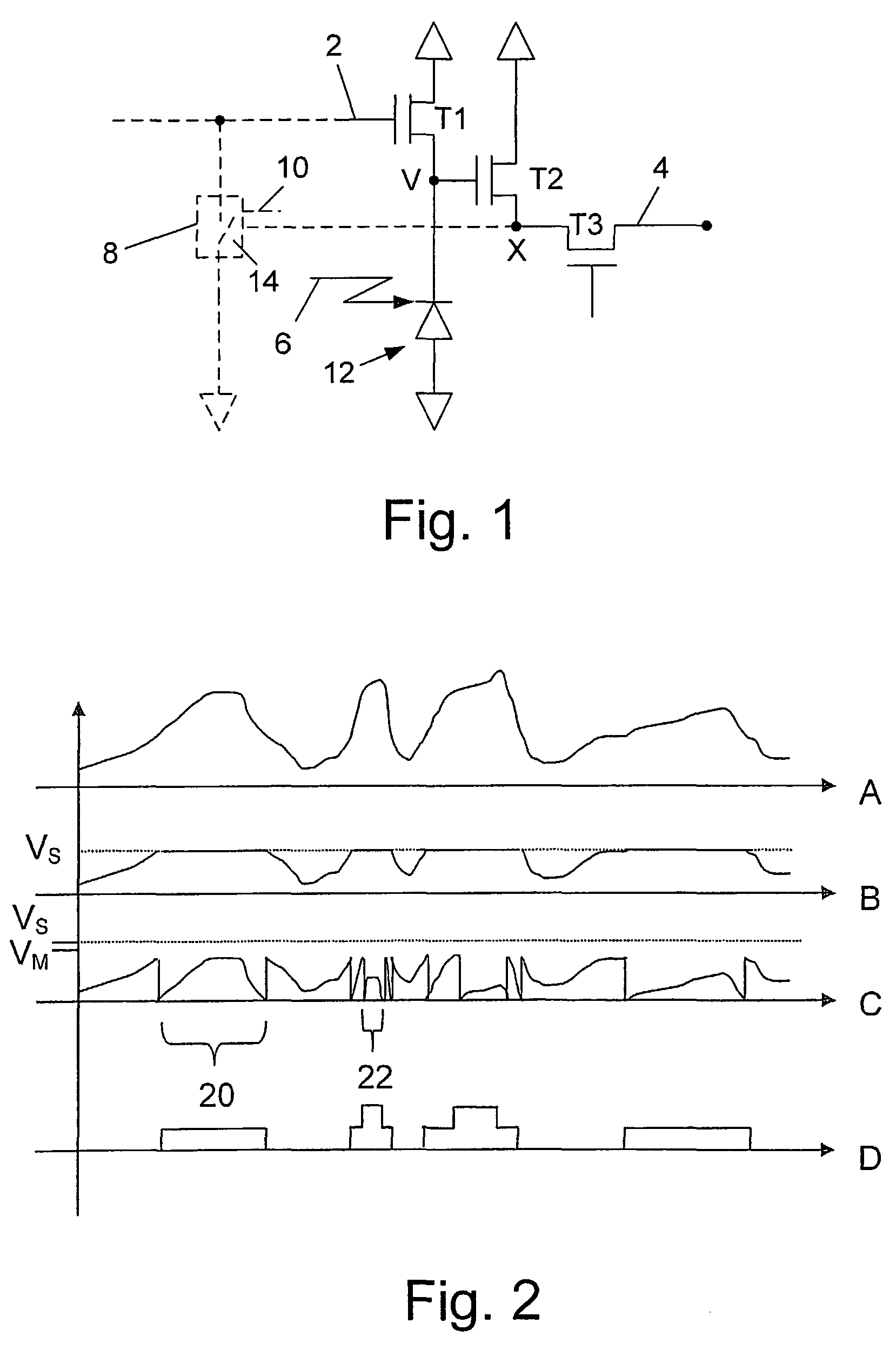Method and apparatus for imaging of scenes having large intensity variance
a technology of intensity variance and imaging method, applied in the field of electronic image generation and processing, can solve the problems of limited dynamic range of the electronic imaging apparatus, reduced detail in both shadowed and highlighted regions, and inability to capture most images, so as to reduce the sensitivity of the sub-array and reduce the intensity of the radiation falling
- Summary
- Abstract
- Description
- Claims
- Application Information
AI Technical Summary
Benefits of technology
Problems solved by technology
Method used
Image
Examples
Embodiment Construction
[0069]The present invention utilizes individual pixel reset to vary the residual integration time of individual pixels and processing of the signals from each pixel to increase the dynamic range of each pixel independently. The inventors estimate that the modifications needed to the area of a conventional chip will result in an increase in the chip area, and thus in production cost, of a maximum of some 15%. The relatively simple and low cost modification of the sensor chips will be introducible to the majority of cameras that are in use. This will render a dynamic range that will compete with cameras that derive an expanded dynamic range, by using more expensive technologies such as built in refrigeration methods, The method of the invention is applicable for different electronic image sensing devices and systems and is especially suitable for CMOS sensor chips. The basic dynamic range of a CMOS sensor is 8 bits or less, which is inferior to that of CCD chips. The method of the inv...
PUM
 Login to View More
Login to View More Abstract
Description
Claims
Application Information
 Login to View More
Login to View More - R&D
- Intellectual Property
- Life Sciences
- Materials
- Tech Scout
- Unparalleled Data Quality
- Higher Quality Content
- 60% Fewer Hallucinations
Browse by: Latest US Patents, China's latest patents, Technical Efficacy Thesaurus, Application Domain, Technology Topic, Popular Technical Reports.
© 2025 PatSnap. All rights reserved.Legal|Privacy policy|Modern Slavery Act Transparency Statement|Sitemap|About US| Contact US: help@patsnap.com



